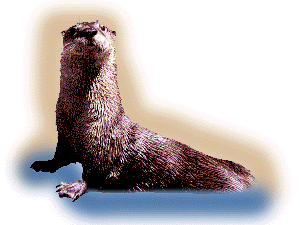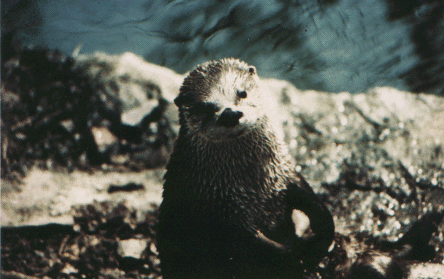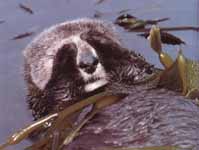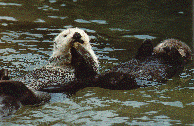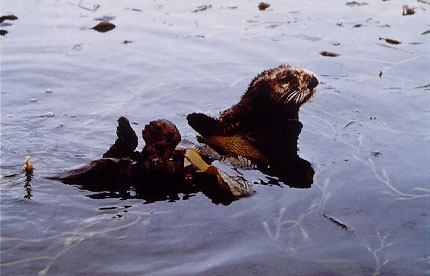 Animal of the week!
Animal of the week!

Hey all and welcome again to Cherry's 14th edition of
"Animal of the week". Here again are a few breif facts on this week's
animal.
This week's animal...The Otter
The the sea otter is the only marine species that are in the weasel family.
Before that, there was the now extinct sea mink (Mustela macrodon) that
lived on the Atlantic coasts of North America during the 19th century.
Otters are expert swimmers, and much of their diet consists of fishes
or invertebrates taken directly from the water. Otters are extremely
sociable animals. Several members of a family may hunt or play together.
The North American river otter
(Lutra canadensis) occurs throughout most of the United States and
Canada, but its numbers have been reduced considerably
as a result of excessive trapping and habitat alteration.
The sea otter's range includes coastal regions of the Bering Sea and
the Pacific Ocean of North America.
The geographic ranges of the eight species of river otters encompass
most of the Americas, Eurasia, and Africa as well as Indochina and
Japan.
Most of a sea otter's time is spent in the ocean, within sight of shore,
feeding on marine animals such as fish, mollusks, and crustaceans.
Each year after a male and female weasel mate, several months may elapse between
fertilization and birth in many species due to a delay in the implantation
of the fertilized egg in the female. Because of this phenomenon, some species,
such as the otters, may remain pregnant for more than a year. The young are
nursed by the mother for about two months.
Sea otters take a great deal of time grooming themselves or their
offspring.
The sea otter is one of the few animals that uses a tool. While
swimming on its back, the sea otter will place a rock on its belly and
break a shell open by hammering it against the rock. Unfortunatly in
the later life of a sea otter, it suffers from chest problems which
was used from the hard banging it used to open things from a rock.
Before sea otters go to sleep, they wrap themselves in kelp that is
near the surface of water. This prevents them from drifting away!
from Compton's Concise Encyclopedia
Copyright (c) 1995 Compton's NewMedia, Inc.
